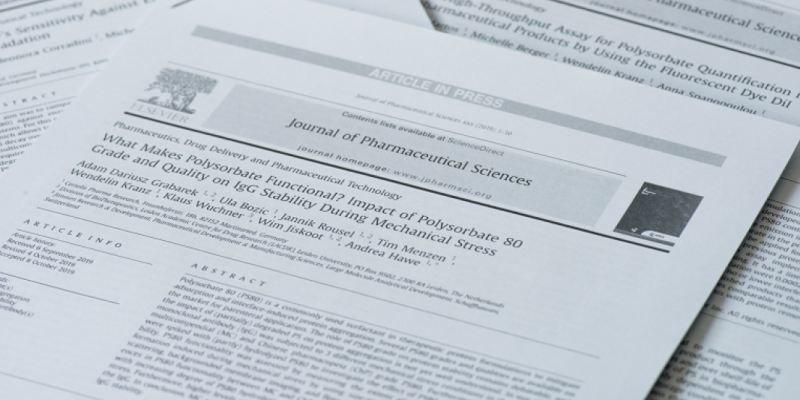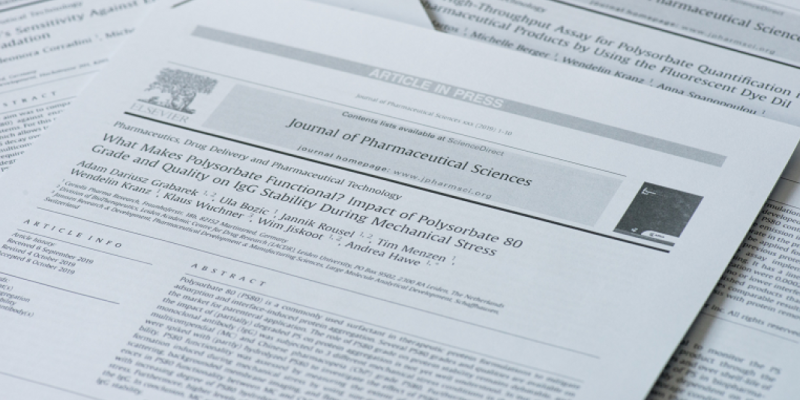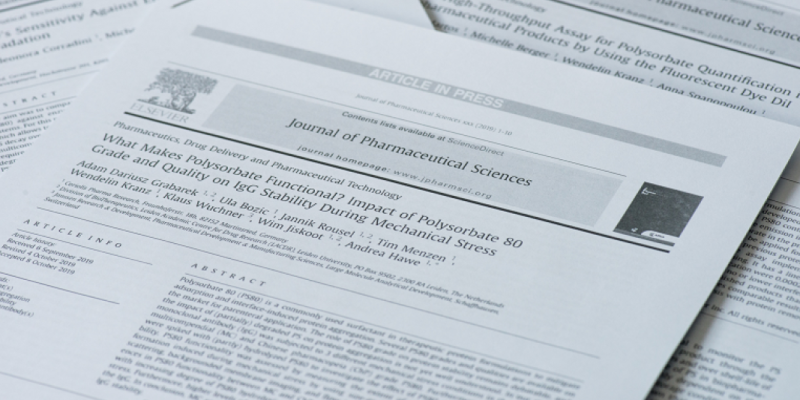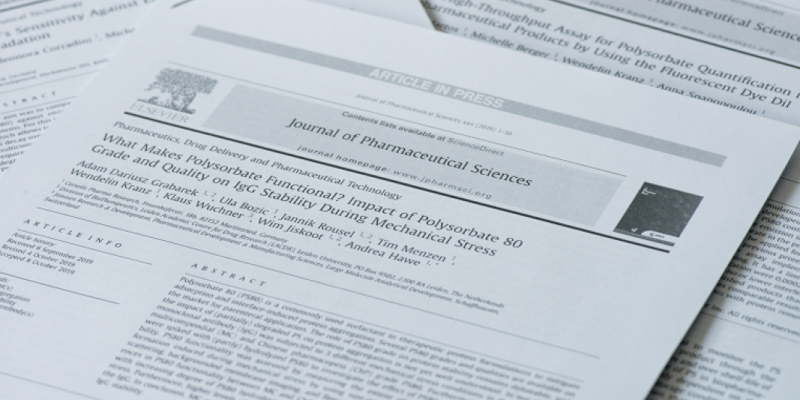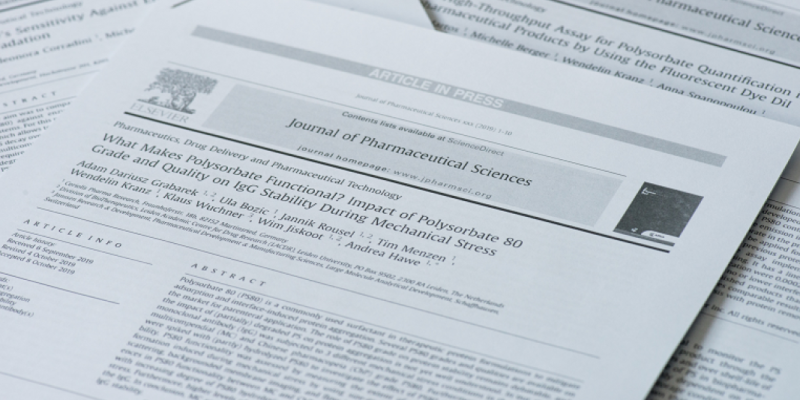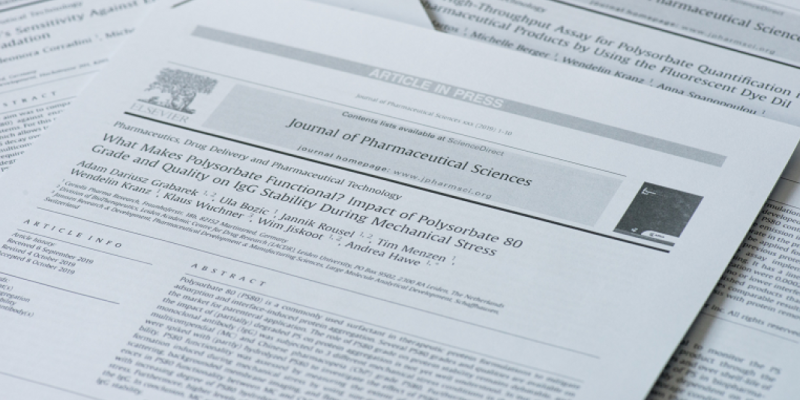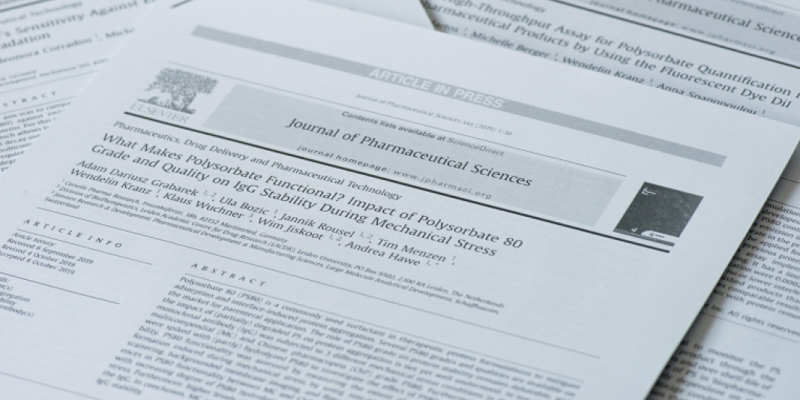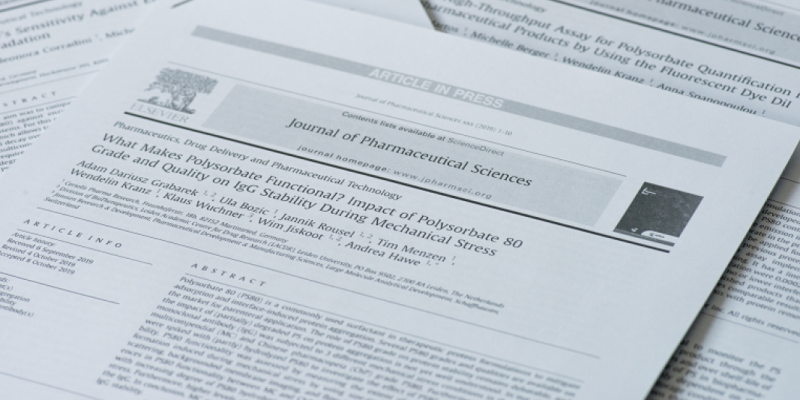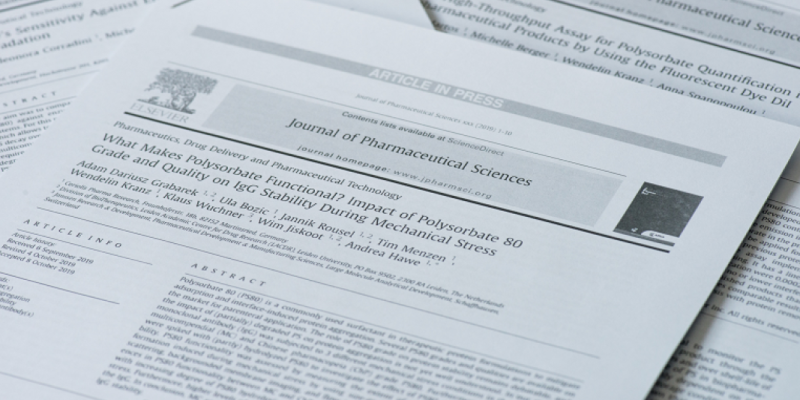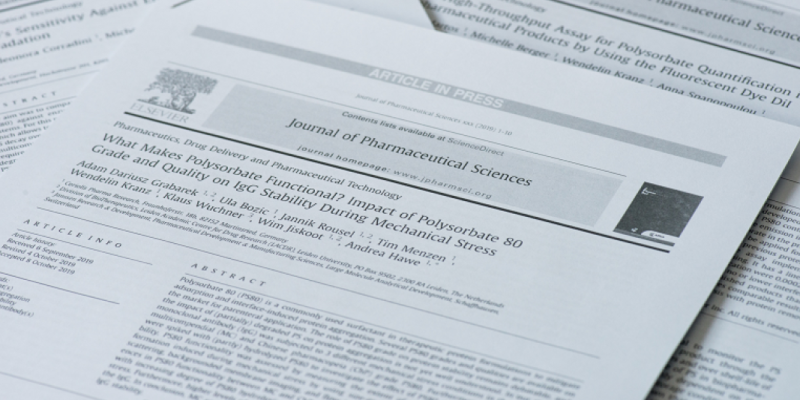Fluorescent molecular rotors as dyes to characterize polysorbate-containing IgG formulations.
Pharm Res. 2010 Feb
PURPOSE: The aim was to evaluate fluorescent molecular rotors (DCVJ and CCVJ), which are mainly sensitive to viscosity, for the characterization of polysorbate-containing IgG formulations and compare them to the polarity-sensitive dyes ANS, Bis-ANS and Nile Red.
METHODS: IgG formulations with polysorbate 20 or 80 were stressed below the aggregation temperature and analyzed by steady-state and time-resolved fluorescence and by HP-SEC with UV and fluorescent dye detection (Bis-ANS and CCVJ). Furthermore, commercial protein preparations of therapeutic proteins (Enbrel 50 mg, Humira 40 mg and MabThera 100 mg) were aggregated accordingly and analyzed with CCVJ fluorescence and HP-SEC.
RESULTS: Contrarily to (Bis-)ANS and Nile Red, the molecular rotors DCVJ and CCVJ showed low background fluorescence in polysorbate-containing buffers. Time-resolved fluorescence experiments confirmed the steady-state fluorescence data. Both DCVJ and CCVJ showed enhanced fluorescence intensity for aggregated IgG formulations and were suitable for the characterization of polysorbate-containing IgG formulations in steady-state fluorescence and HP-SEC with dye detection (CCVJ). CCVJ was capable of detecting thermally induced aggregation in the commercial polysorbate-containing products Enbrel 50 mg, Humira 40 mg and MabThera 100 mg.
CONCLUSION: Fluorescent molecular rotors are suitable probes to detect aggregation in polysorbate-containing IgG formulations.
Pharm Res. 2010 Feb
https://link.springer.com/article/10.1007%2Fs11095-009-0020-2

